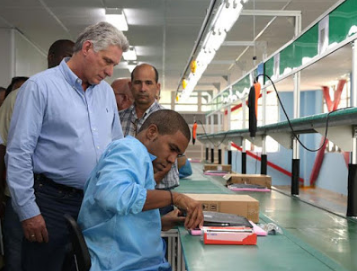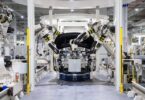aNewDomain — A couple of days ago I read that China’s Haier Group will soon be manufacturing laptops and tablets in Cuba.
Haier is one of the world’s largest home appliance and consumer electronics companies, selling under its own brand name and producing “white label” products for other companies.
Haier was the maker of one third of the refrigerators sold in China when it decided to enter the U.S. market back in 1999, but it wasn’t until 2016 that it finalized a $5.6 billion purchase of General Electric’s appliance division.
 But Haier is not interested in becoming the GE of China, according to one analyst quoted in a Bloomberg report last year. Rather, “it wants to be the Apple of China,” he said.
But Haier is not interested in becoming the GE of China, according to one analyst quoted in a Bloomberg report last year. Rather, “it wants to be the Apple of China,” he said.
The Apple of China? Not yet …
That’s an intriguing goal, so I checked out Haier’s current offerings to see whether it had the stuff to make it happen.
The first thing I discovered was that Haier’s offerings so far comprise cheap, low-end products — the opposite of Apple today.
For example, its 10-inch Windows 10 tablet with a detachable keyboard sells for $149.99. According to reviews I found, it’s of poor build quality and slow, though it seems fine for running a browser and MS Office apps. It’s not really capable of running high-end applications involving high-end video or, even, games.
As for its laptops, Haier says the new ones will feature “sixth generation” technology. That sounds pretty cool until you see the specs — Core i3, Celeron and Core i5 CPUs with up to 1TB of memory. (Maybe it started counting Intel generations beginning with Intel’s 1971 release of the 4004. )
At any rate, specs like these make it pretty clear that we are talking about a factory that won’t be churning out “Apple of China” quality goods for some time.
Haier’s hardware and software partners
 According to a release, Haier will be partnering with Gedeme, a Cuban manufacturer and wholesaler of telecommunication and electronic devices as well as office furniture and radio towers.
According to a release, Haier will be partnering with Gedeme, a Cuban manufacturer and wholesaler of telecommunication and electronic devices as well as office furniture and radio towers.
Gedeme is the jack-of-all trades manufacturer that will assemble laptop and notebooks in Cuba using Haier parts, equipment and production processes. The factory capacity is said to be 500 units per day, but only 50,000 units are planned for the first year and initially all units will be for the wholesale market and government offices.
That’s an image of the Gedeme factory floor, at left. Note there are four managers and one worker in the photo — and no robotics.
And Haier’s software partner is Cuba’s University of Informatics Science, which it says will be responsible for drivers and customization for the operating system –presumably Windows 10.
The whole situation reminds me of Japanese industry after World War II. It, too, began by making low-end products using local labor. Over the years, though, it moved up the value chain until it was able to produce competitive, high-end products using foreign labor. For Haier, Cuba is the home of its low-cost and relatively well educated labor.
It will be interesting to see how many Cubans Haier will employ in this factory and what sorts of jobs they will have.
Chinese companies are the primary vendors of Cuban Internet infrastructure and consumer electronics — now they are moving into manufacturing.












